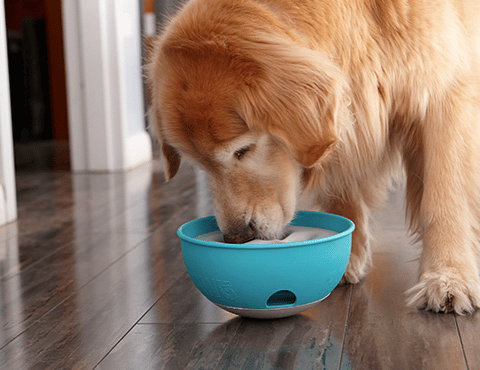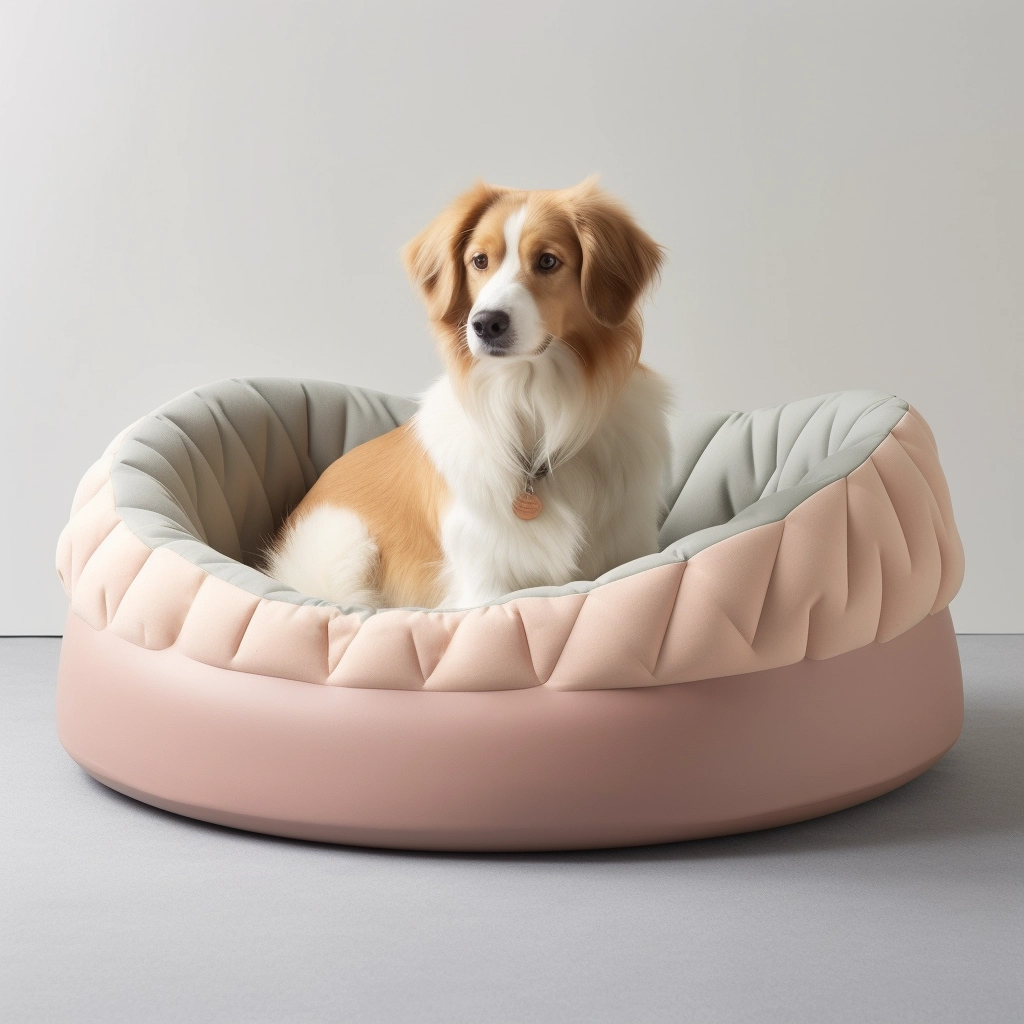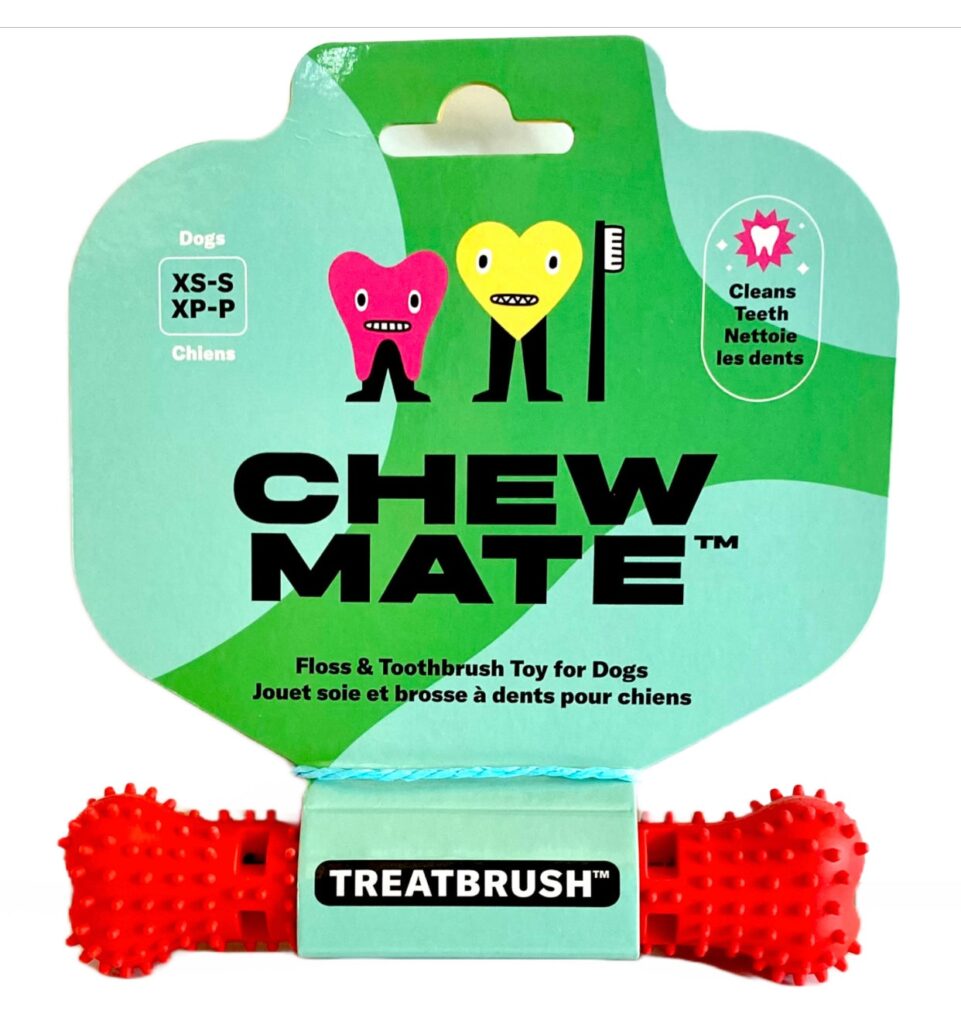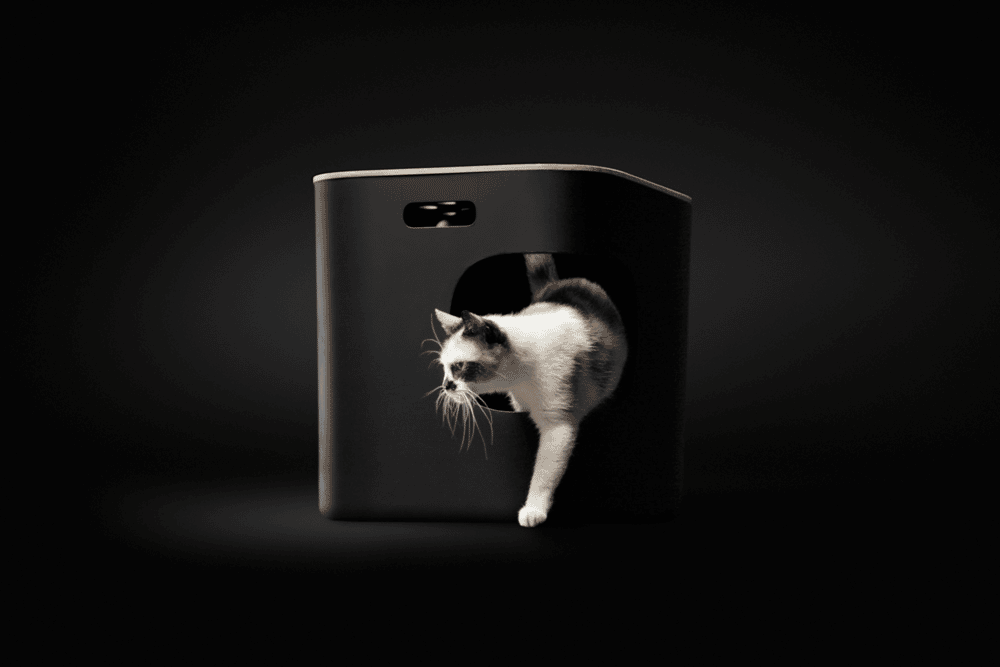The pet industry is experiencing unprecedented growth, projected to reach $365 billion by 2030, driven by increasing demand for premium pet products that prioritize safety, sustainability, and innovation.
As pet owners become more selective, they are seeking higher-quality pet food, durable toys, and eco-friendly accessories—leading to increased spending across the market. This shift in purchasing behavior presents a significant opportunity for businesses while also introducing challenges such as strict safety regulations, reliable sourcing, and differentiation in a competitive marketplace.
While these hurdles can be significant, the potential rewards outweigh the risks. Businesses that focus on product quality, compliance, and differentiation can carve out a niche and establish a strong foothold in the industry. Aligning with market trends, consumer expectations, and manufacturing best practices is key to long-term success.
This guide will walk you through the critical aspects of pet product manufacturing, from meeting regulatory requirements and choosing the right manufacturing model to implementing sustainable practices and developing a strong market position.
Key Takeaways
- Consumer demand for health-focused, eco-friendly, and tech-enabled pet products is shaping the market, creating opportunities for brands that prioritize innovation.
- Regulatory compliance with CPSIA, FDA, and Proposition 65 is critical to ensuring product safety, avoiding recalls, and maintaining consumer trust.
- Manufacturing choices impact speed, cost, and differentiation—white-label allows for faster market entry, while custom manufacturing offers unique branding opportunities.
- Sustainability and direct-to-consumer (DTC) models are key growth drivers, with biodegradable materials, refillable packaging, and subscription-based sales gaining traction.
Emerging Trends in the Pet Industry
The pet industry is evolving rapidly, driven by shifting consumer preferences and technological advancements. Here are five key trends shaping the market and influencing pet product manufacturing:
1. Health & Wellness-Focused Pet Products
Pet owners are increasingly seeking products with proven health benefits, leading to a surge in demand for specialized pet food, veterinary-formulated diets, and evidence-based supplements. Instead of generic “healthy” options, consumers seek nutrition tailored to their pet’s specific needs, such as supporting joints, improving digestion, and reducing allergies. This trend has fueled growth in high-protein diets, breed-specific nutrition, probiotic-enriched pet food, and supplements designed for senior pets.
2. Sustainability & Eco-Friendly Materials in Pet Products
Consumers are actively seeking sustainable alternatives when shopping for pet toys, accessories, and packaging. This has led to increased demand for biodegradable waste bags, organic fabrics, recycled plastics, and plant-based packaging. Brands that prioritize transparency in sourcing and sustainability certifications are gaining a competitive edge as eco-conscious pet owners look for low-impact pet products.
3. Smart Pet Care & Connected Devices
Technology is making pet care more convenient and secure, with products that help owners monitor and manage their pets remotely. Automated pet feeders ensure pets are fed on time, while GPS-enabled collars help track lost pets in real-time.
Interactive pet cameras allow owners to check in, talk to their pets, and even dispense treats while they’re away. As pet owners look for solutions that fit their busy lifestyles, demand for these tech-driven pet care products continues to grow.
4. The Rise of High-Quality & Premium Pet Products
Pet owners are increasingly investing in quality over quantity, choosing long-lasting, well-crafted pet products that offer better materials, durability, and tailored benefits. This shift is most evident in premium pet food, orthopedic pet beds, vet-recommended supplements, and advanced grooming tools. Rather than just paying for luxury, consumers are prioritizing longevity, safety, and performance—expecting the same high standards in pet products as they do for human goods.
5. Expansion of Direct-to-Consumer (DTC) Pet Brands
More pet brands are bypassing traditional retail and selling directly to consumers through e-commerce and subscription models. This shift is driven by customization, convenience, and brand loyalty—DTC brands offer personalized nutrition plans, auto-replenishment of pet supplies, and exclusive online-only products. Platforms like Amazon, Shopify, and Chewy continue to dominate, while smaller boutique pet brands are carving out niches through subscription boxes, specialty pet diets, and community-driven marketing.
Understanding Pet Product Safety & Compliance Standards
Safety and compliance are non-negotiable in the pet industry. Pet owners expect products to be free from harmful chemicals, and manufacturers must meet strict regulatory standards to ensure safety, quality, and legal compliance.
Key Regulations for Pet Product Manufacturers
Key regulations such as CPSIA, FDA, and California’s Proposition 65 are designed to protect pets and consumers by enforcing safety standards for pet toys, food, and accessories. Failing to comply can lead to legal consequences, product recalls, and reputational damage. Here are some important regulations businesses need to keep top of mind:
- Consumer Product Safety Improvement Act (CPSIA): The CPSIA establishes strict safety standards for children’s products, including pet toys, by limiting hazardous substances like lead, BPA, and phthalates. Compliance ensures pet products are free from toxic materials that could pose health risks, requiring third-party testing to verify safety before products enter the market.
- Food & Drug Administration (FDA) Regulations: The FDA regulates pet food, treats, and supplements, ensuring manufacturers follow ingredient safety, proper labeling, and contamination prevention guidelines. Companies must comply with FDA standards to prevent the inclusion of harmful additives, improper nutrient levels, or misleading claims, which can directly impact pet health. A list of important FDA guidelines can be found here.
- California Proposition 65: This regulation requires businesses to label pet products that contain chemicals known to cause cancer or reproductive harm, including certain plastics and dyes. Manufacturers selling in California must either eliminate hazardous substances or provide clear warnings, or they risk legal penalties and consumer mistrust.
- The Lacey Act: The Lacey Act prevents the illegal trade of plant-based materials, ensuring that wood, natural fibers, or paper used in pet products are legally sourced. Manufacturers importing pet accessories, toys, or packaging that contain plant-derived components must verify their supply chains to avoid penalties and ensure sustainability.
Material Safety & Durability Testing
Ensuring pet products are free from toxic materials and built to last is a crucial part of manufacturing. Material safety testing verifies that products do not contain lead, BPA, phthalates, or other harmful chemicals that could leach into food bowls, chew toys, or pet beds. Many pet owners are increasingly aware of product safety certifications, making third-party lab testing an important step to verify compliance with regulations like CPSIA and California Proposition 65.

Factory Audits & Quality Control
Consistent quality control measures help manufacturers avoid product defects, ensure compliance, and maintain industry credibility. Conducting factory audits before production begins helps identify potential safety risks, assess material sourcing, and confirm whether a supplier meets international regulatory standards. Audits are particularly valuable when working with overseas suppliers, where quality and compliance standards may vary.
Beyond initial audits, ongoing inspections throughout the manufacturing process are essential to maintaining consistent product quality. Many retailers require suppliers to follow ISO (International Organization for Standardization) or GMP (Good Manufacturing Practices) standards, which outline strict safety, cleanliness, and production protocols. By conducting regular factory evaluations and third-party quality assessments, manufacturers can ensure that pet products meet durability, safety, and performance expectations before reaching the market.
Choosing the Right Manufacturing & Sourcing Model
Selecting the right manufacturing and sourcing model is critical for cost efficiency, product quality, and speed to market in the pet products industry. Businesses typically choose between white-label manufacturing for quick market entry or custom manufacturing for product differentiation. Each model has its own benefits, costs, and production timelines.
White Label Manufacturing
White-label manufacturing provides a fast and cost-effective way to launch pet products with minimal development effort. Businesses can rebrand existing products, reducing startup expenses and time to market while focusing on branding, marketing, and distribution.
This model is ideal for companies looking to scale quickly without the need for product design, prototyping, or extensive R&D. While customization is limited, white-label solutions offer an efficient way to test the market and establish a brand presence.
For businesses seeking a middle ground between speed and uniqueness, Gembah’s Direct-to-Manufacturer (D2M) approach offers a practical alternative, combining rapid development with the ability to achieve differentiation without the extensive investment of full custom manufacturing.

Custom Manufacturing
Custom manufacturing is the best option for businesses looking to create unique, high-quality pet products. This approach allows for full control over materials, design, size, packaging, and functionality, ensuring that products stand out in a competitive market.
Although custom manufacturing requires a larger upfront investment, it enables strong brand differentiation and long-term scalability. Businesses that prioritize innovation and premium-quality products often opt for this model to build a loyal customer base and enhance brand reputation.
Finding Reliable Pet Product Manufacturers
Choosing the right manufacturing partner is essential to maintaining product quality, safety compliance, and production efficiency. Businesses should vet manufacturers for industry certifications such as ISO and GMP to ensure adherence to safety and quality standards.
Location also plays a role—manufacturing in Asia can offer cost savings, while U.S.-based production may provide better quality control, faster shipping, and easier communication. Understanding MOQ (Minimum Order Quantity) requirements, lead times, and supplier capabilities helps businesses make informed decisions.
Establishing clear expectations, conducting factory audits, and maintaining strong supplier relationships are key to avoiding production delays, compliance issues, and quality concerns. A well-vetted manufacturing partner supports long-term business growth and product reliability.
Sustainable Pet Product Development
Sustainability is becoming a key driver of purchasing decisions in the pet industry, with consumers actively seeking eco-friendly alternatives in pet food, toys, and accessories. Businesses that incorporate sustainable materials, biodegradable packaging, and ethical sourcing are better positioned to attract environmentally conscious pet owners while reducing their environmental footprint.
Adopting sustainable manufacturing practices does more than enhance brand appeal—it also ensures compliance with regulatory standards and helps businesses stay ahead of shifting market trends. Below, we explore eco-friendly materials, sustainable packaging solutions, and key certifications that reinforce a brand’s commitment to sustainability.

Eco-Friendly Materials for Pet Products
The demand for durable, non-toxic, and environmentally friendly materials is reshaping the pet product industry. Instead of traditional plastics and synthetic fabrics, manufacturers are turning to bamboo, recycled plastics, hemp, and organic textiles, which offer both sustainability and durability. These materials not only reduce environmental impact but also align with consumer expectations for safer, toxin-free pet supplies.
Natural fibers such as hemp and organic cotton are increasingly used in pet bedding, collars, and toys, providing a sustainable and biodegradable alternative to conventional materials. Additionally, recycled polyester made from post-consumer plastic waste is gaining traction in pet apparel and accessories, offering a second life to discarded plastics while maintaining product quality.
By prioritizing sustainable raw materials, businesses can create long-lasting, premium pet products that appeal to eco-conscious consumers and differentiate their brand in a competitive market.
Biodegradable & Sustainable Packaging
Packaging plays a significant role in the sustainability of pet products, as excessive plastic waste remains a growing concern. To address this, companies are transitioning to biodegradable, compostable, and recyclable materials that reduce environmental impact while maintaining product integrity. Compostable plastics derived from plant-based sources break down naturally under controlled conditions, offering a lower environmental footprint than traditional plastics. Similarly, recyclable cardboard and paper-based packaging helps reduce reliance on single-use plastics, supporting waste reduction efforts in pet product manufacturing.
Some companies are also embracing reusable and refillable packaging models, allowing pet owners to purchase products in bulk or participate in return-and-reuse systems that minimize excess waste. This approach not only supports sustainability initiatives but also encourages repeat purchases and brand loyalty among environmentally conscious consumers. As demand for eco-friendly alternatives continues to grow, integrating sustainable packaging solutions is becoming more than just a regulatory necessity—it is a strategic advantage that enhances consumer trust and long-term business success.
Sustainability Certifications & Compliance
To validate their commitment to eco-friendly production, manufacturers often seek third-party sustainability certifications that confirm adherence to environmental and ethical standards. Key certifications include:
- OEKO-TEX: Ensures textiles and pet fabrics are tested for harmful substances, making them safer for both pets and the environment.
- FSC (Forest Stewardship Council): Guarantees that wood-based pet products (such as chew toys and cat furniture) are sourced from responsibly managed forests.
- GOTS (Global Organic Textile Standard): Certifies that organic fibers used in pet products meet strict ecological and labor criteria.
- USDA Organic: Verifies that organic pet food and treats meet federal organic production and labeling standards.
- B Corp Certification: Recognizes businesses that meet high standards for social and environmental responsibility, including sustainable manufacturing practices.
By obtaining these certifications, businesses reinforce their credibility, appeal to eco-conscious customers, and align with retail requirements for sustainability standards.
Branding & Market Positioning for Pet Products
With the pet industry growing rapidly, strong branding and effective market positioning are critical for standing out in an increasingly competitive landscape. A well-defined brand identity not only attracts customers but also fosters long-term loyalty, helping businesses transition from niche offerings to widely recognized pet product brands. Companies that invest in unique product design, premium packaging, and compelling brand storytelling are more likely to build consumer trust and sustain growth.
Establishing a strong market presence requires more than just high-quality products—it involves differentiation, customer engagement, and strategic distribution. Below, we explore how businesses can position their brand effectively, create custom packaging that enhances perceived value, and select the right sales channels for sustained success.

Differentiating Your Brand in a Competitive Market
As DTC pet brands continue to gain traction, businesses must focus on building a unique value proposition (UVP) that resonates with pet owners. A brand that effectively communicates its mission, product benefits, and emotional appeal will have a stronger competitive edge.
Successful differentiation often relies on three key factors:
- Distinctive Product Design: Creating innovative pet products that offer functional benefits, aesthetic appeal, or unique features.
- Premium Branding & Packaging: Using eco-conscious materials, bold visual identity, and high-end packaging to elevate perceived quality.
- Authentic Storytelling: Connecting with customers through engaging brand narratives, ethical sourcing, or mission-driven initiatives.
Pet owners are increasingly drawn to brands that align with their values, whether through sustainability, health-conscious pet food, or community-driven messaging. By leveraging these elements, businesses can create a brand that stands out, retains customers, and builds lasting credibility.
Custom Packaging & Branding Strategies
Packaging plays a critical role in how pet owners perceive a brand. In retail settings, it must be eye-catching and informative, while in eCommerce, packaging design should enhance the unboxing experience. A well-designed package can convey product quality, reinforce sustainability efforts, and strengthen brand recognition.
Retail packaging must be visually appealing and functional, ensuring that labels, claims, and certifications are clear and easily readable on store shelves. Meanwhile, eCommerce packaging should prioritize protection during shipping while offering an engaging and memorable unboxing experience. Some brands even use branded inserts, QR codes, or personalized messages to deepen customer relationships and encourage repeat purchases.

Investing in custom packaging solutions that align with branding efforts can differentiate a product in a crowded marketplace. Companies that prioritize sustainable materials, reusable packaging, or creative structural designs can appeal to eco-conscious consumers while strengthening brand loyalty.
Sales Channels: E-Commerce vs. Retail
Choosing the right sales channels is just as important as developing a strong product. Many pet brands are finding success with direct-to-consumer (DTC) eCommerce strategies, while others pursue retail partnerships to expand their reach and credibility in the market. Each approach offers distinct advantages, and businesses must carefully evaluate which model aligns best with their goals, budget, and operational capabilities.
E-commerce platforms like Amazon, Shopify, and Chewy provide brands with direct access to consumers, allowing them to control their messaging, pricing, and customer experience. Selling online also enables brands to gather valuable consumer data, which can be used to optimize marketing efforts and product development. Additionally, DTC strategies offer flexibility through subscription models, personalized product bundles, and auto-replenishment services, helping brands maintain customer retention and predict sales more effectively.
Retail expansion, on the other hand, requires brands to meet specific qualifications and industry standards before securing shelf space in major stores like Petco, PetSmart, and independent pet boutiques. To gain entry into retail, businesses need a proven sales record, strong branding, and compliance with safety regulations. While retail partnerships provide greater visibility and credibility, they also come with challenges, including higher minimum order quantity (MOQ) requirements, competitive pricing demands, and strict supply chain consistency to meet retailer expectations.
Whether selling online, in physical stores, or through a hybrid model, brands must maintain consistent branding, a clear value proposition, and a strong product reputation across all channels. Leveraging social media, influencer partnerships, and customer engagement strategies can further strengthen a pet brand’s market presence, helping it stand out in an increasingly crowded industry.
Positioning Your Pet Product Brand for Success
The pet industry is growing rapidly, creating significant opportunities for businesses that can navigate safety regulations, sourcing challenges, and market competition. Companies that prioritize compliance, sustainability, and strong branding will be best positioned to succeed as consumer expectations continue to evolve.

Bringing a pet product to market requires strategic planning and trusted manufacturing partnerships to ensure quality and efficiency. Gembah’s expert team simplifies the development process, helping businesses launch with confidence. Whether you’re entering the market for the first time or scaling an existing brand, now is the time to take action. Reach out to Gembah today to bring your pet product vision to life.
Frequently Asked Questions
What regulations apply to pet product manufacturing?
Pet products must comply with CPSIA (for toys), FDA regulations (for consumables), and California Prop 65 (for chemical safety). Testing for lead, BPA, and other hazardous substances is required to ensure compliance. For pet food, the FDA and AAFCO set ingredient, labeling, and nutritional standards.
Should I choose white-label or custom manufacturing for my pet product?
White-label manufacturing is ideal for quick market entry and lower costs, while custom manufacturing allows for unique product differentiation and full branding control. The best choice depends on your budget, brand goals, and product complexity.
What are the best sustainable materials for pet products?
Eco-friendly options include bamboo, recycled plastics, organic textiles, and biodegradable packaging. These materials help reduce environmental impact while aligning with consumer demand for sustainability and product safety.
How can I get my pet product into major retailers like Petco and PetSmart?
Retailers require high-quality, safety-tested products with strong branding and packaging. To secure a retail partnership, you must meet MOQ (Minimum Order Quantity) requirements, competitive pricing, and supply chain consistency while demonstrating strong consumer demand.
What are the best sales channels for launching a pet product?
E-commerce platforms like Amazon, Shopify, and Chewy provide direct-to-consumer access and flexible sales strategies. For retail expansion, consider specialty pet stores, big-box retailers, and subscription models, which can enhance customer retention and brand exposure.



